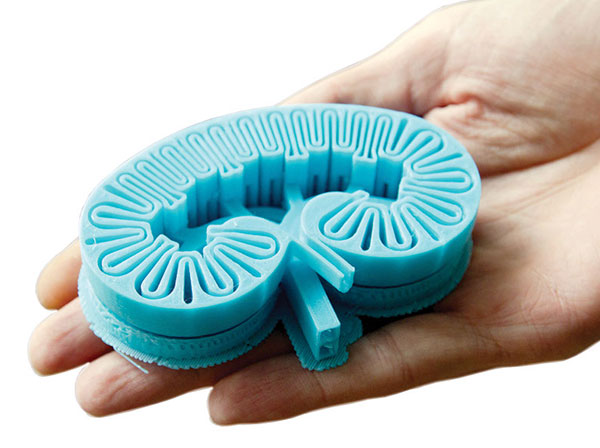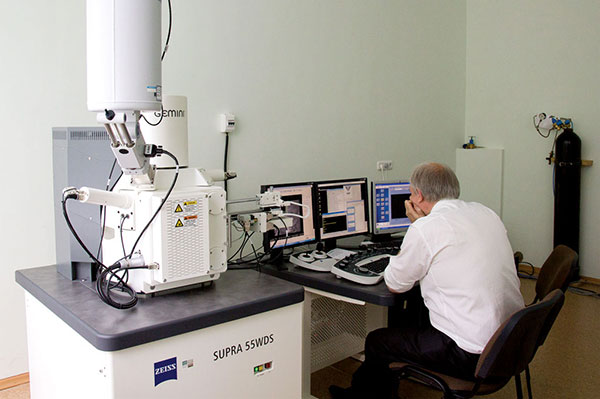
On transplanting this printed kidney, a human organism would not reject it
The laboratory head, Sergey Filatov, holds a model of a human kidney in his hand; ready to be 3D printed. This is not a full copy of the original but if this artificial organ were transplanted to a patient, it would be accepted: the kidney is made from a biologically compatible material. Threads for operations are also made using this method. These are the first steps to producing artificial organs, but if the idea receives financial support, then the first laboratory tests would become possible in three years. “Nobody in the world has so far printed a fully-fledged organ ready for implantation,” Mr. Filatov demonstrates a 3D kidney model on the screen. “This is a complicated process which needs time.”
Theoretically, if this were to become possible, a small amount of fat tissue is taken from a patient to receive necessary cells. A 3D model of an organ is then prepared by a computer. Later, a 3D printer is involved into the process: live cells are placed on a sample of the biological material, which resembles plastic. These cells connect with each other, creating a form. As a result, an artificial organ is produced from the patient’s own cells. It then needs to be activated in a special way, trained and tested for functionality. After all these procedures are complete, the artificial kidney can be transplanted. In the course of time, ‘plastics’ will dissolve in the body (as surgical stitches do) while the basis of the cells will remain. Technologies of the kind could be used in cases when a patient urgently needs transplantation but there is no organ available. Mr. Filatov shows us a photo of a 3D model of the internal organs of a person. In the course of time, we’ll be able to apply 3D technologies to plan surgical operations. This means that a doctor would be able to virtually ‘rehearse’ a complicated operation if necessary.

This is the best electronic microscope in the country: the materials used for 3D printing can be studied with a resolution of x1,400
Another room in the Institute has two sections separated by thick glass. Complete silence is needed here, as nothing must disturb the scientist’s concentration. An electronic microscope is in the centre; the device is in no way similar to those used in biology classes at school. It is large and has several monitors nearby; its keyboard reminds one of a board in a pilot’s cabin. This is the best electronic microscope in the country. On inserting a sample into its camera, Mr. Filatov comments, “Just look: the picture has increased 1,400 times. We can study in great detail the quality of materials used for 3D printing.” An optical tomograph is another unique device developed at the laboratory; it resembles a refrigerator at first sight. However, it aims to study the internal structure of biological and technical objects.
The Institute is actively studying additive technologies and developing new models of 3D printers, perfecting their possibilities and improving materials for printing. It also has a device for 4D printing; Mr. Filatov explains its mechanism, “It makes it possible to develop a unique material which would change its colour depending on the level of lighting.” This technology has plenty of possibilities, but as the scientist admits, it also has many problems. Firstly, qualified staff is needed; so far, only a few specialists of the kind work in the country. Secondly, materials are important; this method of printing requires unusual materials. Thirdly, these problems can only be solved if the high school, academic and scientific branches of education liaise closely. Really, in order to develop a functioning kidney, the process needs the involvement of scientists, doctors and programmers.
By Taisiya Azanovich











